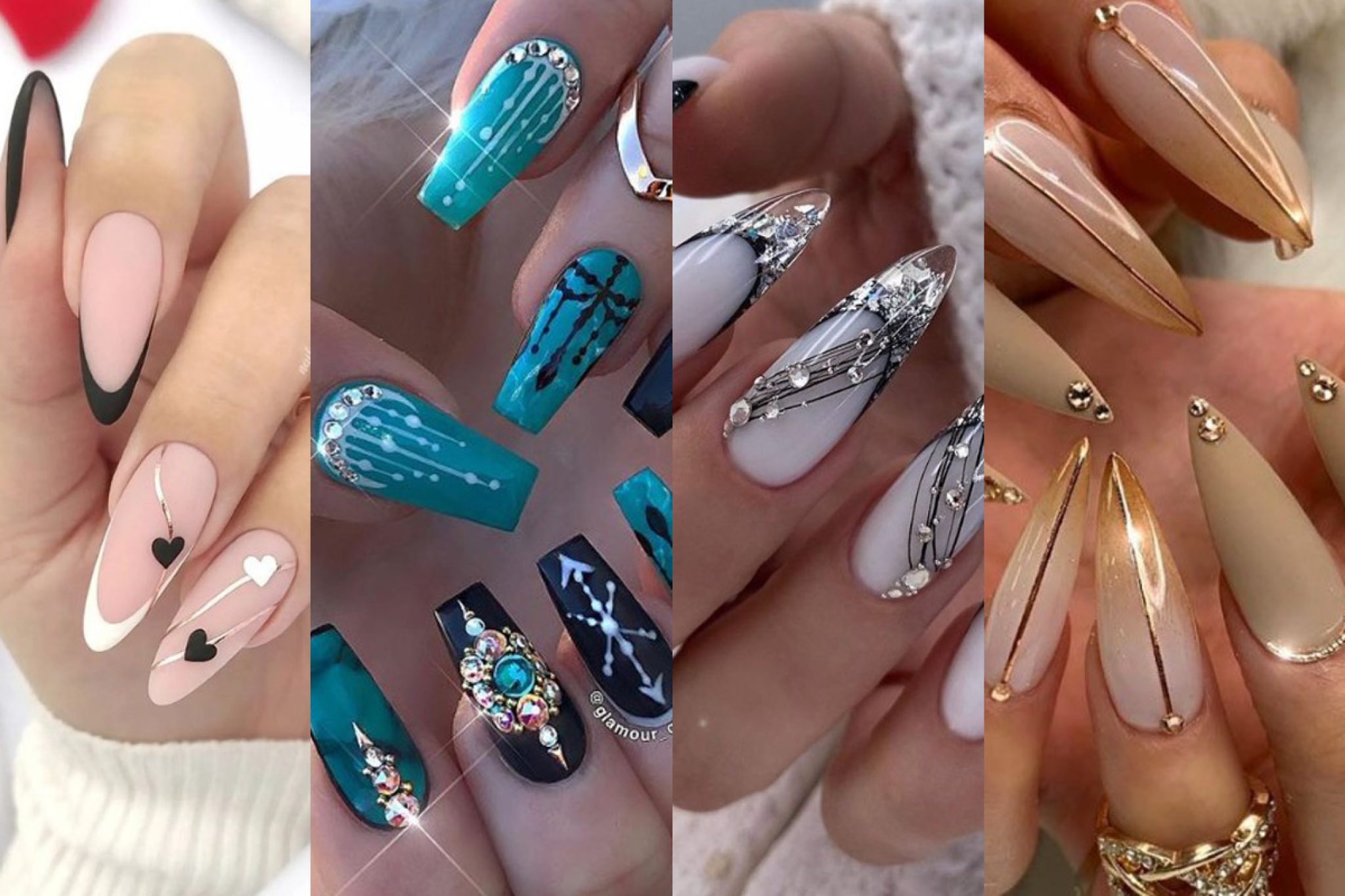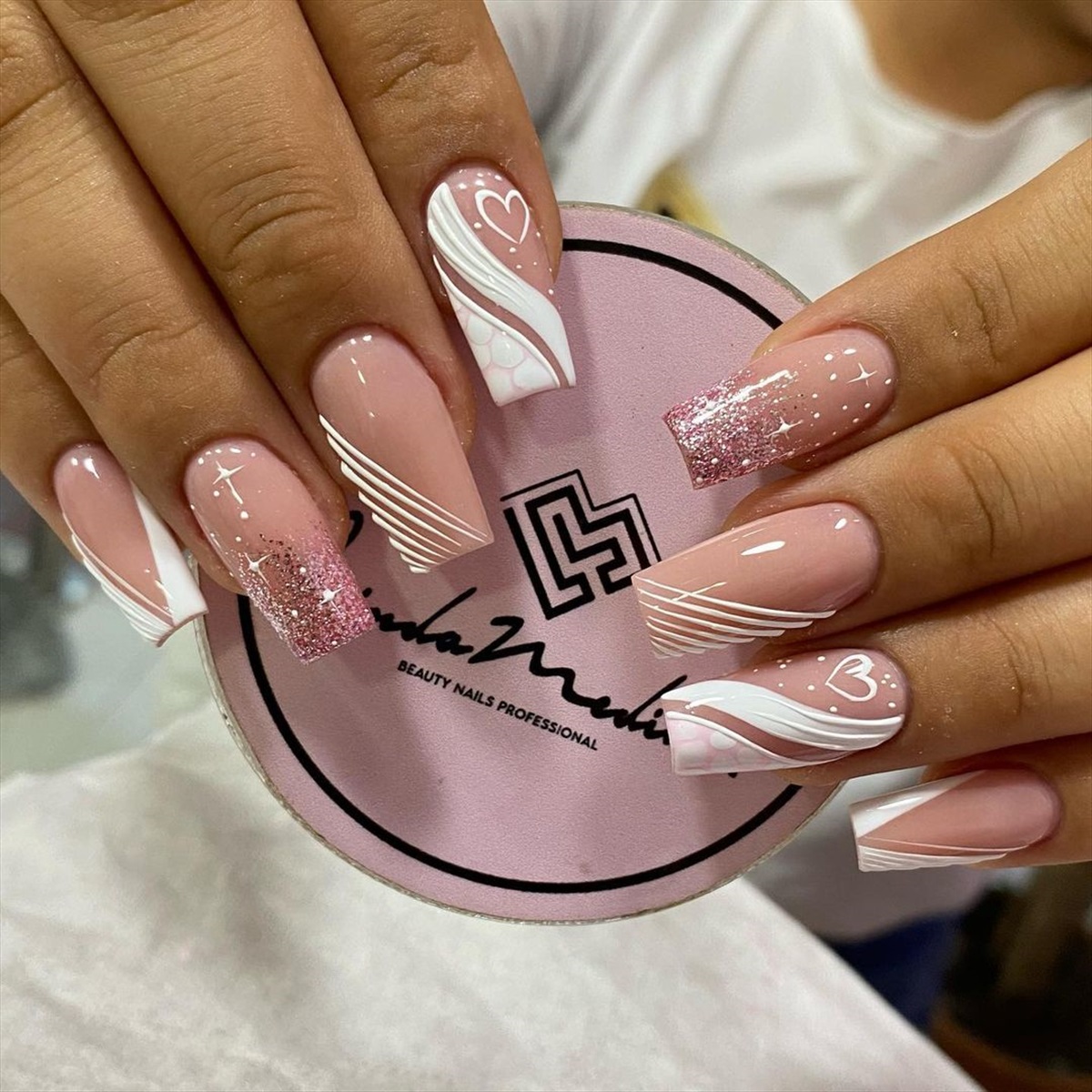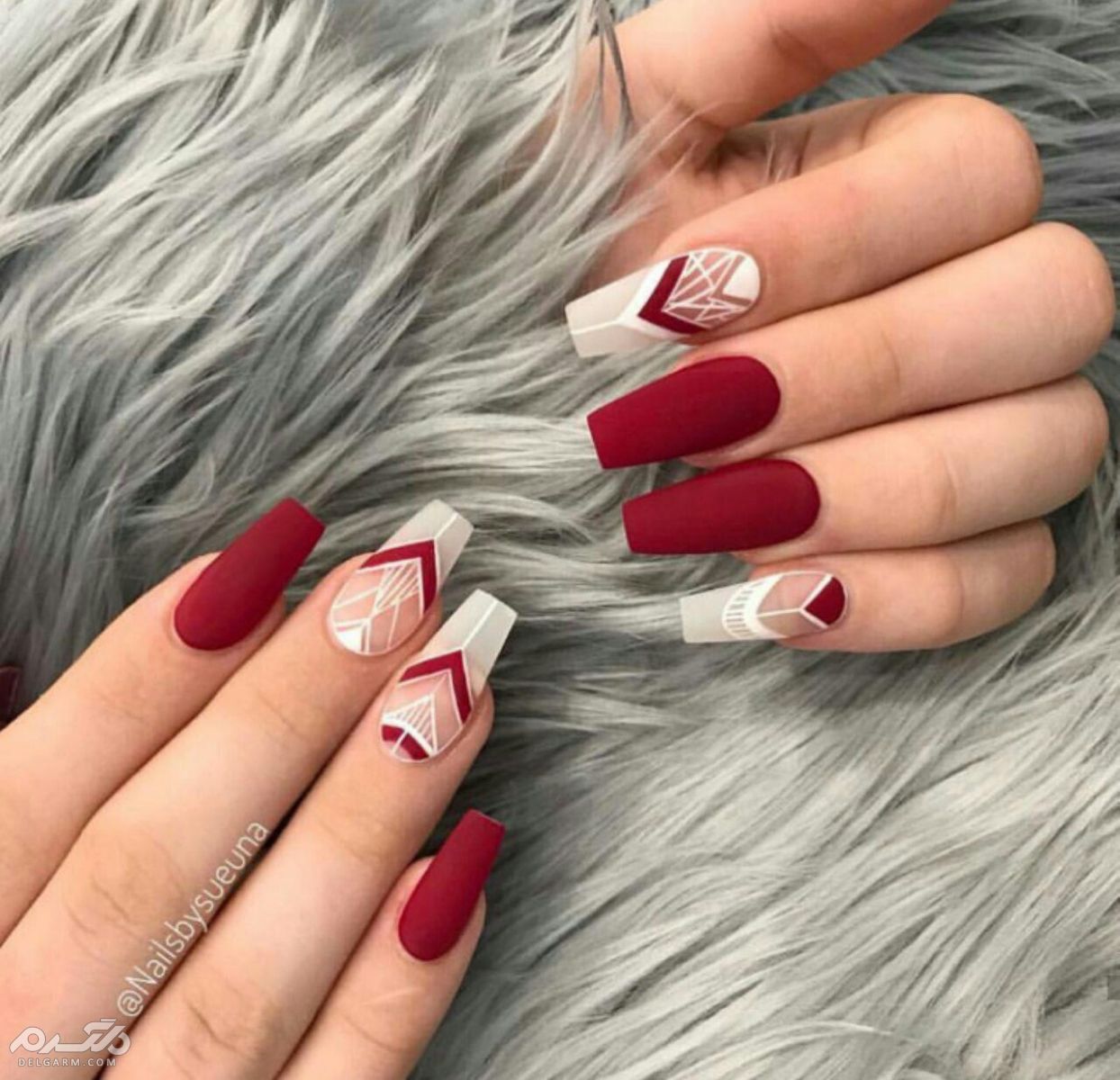The Ancient Roots Of Nail Art: A Historical Journey
Table of Contents:
- Unearthing the Past: The Earliest Records of Nail Adornment
- The Evolution of Nail Care Tools and Techniques
- The Roaring Twenties and Beyond: Nail Polish Goes Mainstream
- The Rise of Nail Salons and Professional Nail Art
- Modern طرح ناخن: A Canvas for Self-Expression
- The Cultural Significance of Nail Design Through History
- The Future of طرح ناخن: Innovation and Inclusivity
- Preserving History, One Manicure at a Time
Unearthing the Past: The Earliest Records of Nail Adornment
To truly appreciate the journey of **طرح ناخن**, we must journey back thousands of years. The earliest evidence of nail adornment dates back to around 3200 BC, discovered in ancient Babylon. Warriors would meticulously color their nails with kohl before battle, with different colors signifying different ranks. Black and green were popular choices, indicating the ferocity or status of the soldier. This practice highlights the early connection between nail aesthetics and social or martial identity. Beyond the battlefield, ancient civilizations across the globe independently developed their own unique approaches to nail care and decoration. These early forms of nail art were often deeply intertwined with religious beliefs, social hierarchies, and daily rituals, laying the groundwork for the diverse practices we see today.Ancient Egypt: Status and Symbolism Through Nails
Perhaps one of the most well-documented historical uses of nail adornment comes from ancient Egypt, starting around 3000 BC. Here, nail color was a clear indicator of social status and wealth. The higher one's rank, the deeper and richer the color of their nails. Henna, a dye derived from the *Lawsonia inermis* plant, was the primary substance used. Pharaohs and high-ranking officials, including famous people like Cleopatra and Nefertiti, favored deep red and rust hues. The deeper the red, the more prestigious the individual. Commoners, on the other hand, were restricted to lighter shades or no color at all. Archeological findings from tombs have revealed mummified remains with nails still stained with henna, underscoring the importance of this practice in the afterlife as well as in daily life. This historical event in beauty showcases how nails were not just about aesthetics but about communicating one's position in society.Imperial China: Royalty's Long, Lavish Nails
In ancient China, particularly during the Ming and Qing Dynasties (1368-1912 AD), long, meticulously cared-for nails were a powerful symbol of aristocracy, wealth, and leisure. Unlike laborers, who needed short nails for practical reasons, the elite could afford to grow their nails to extreme lengths, sometimes up to 10 inches, as a testament to their freedom from manual labor. The colors used were equally significant. Gold and silver were popular among royalty, later joined by black and red. To protect these elaborate extensions, intricate nail guards made of precious metals and jewels were worn, further showcasing one's status. The process of achieving these colors involved a concoction of egg whites, beeswax, gelatin, and vegetable dyes. This dedication to nail length and color highlights a distinct cultural approach to **طرح ناخن** as a symbol of privilege and beauty, a practice that continued for centuries.The Evolution of Nail Care Tools and Techniques
As nail adornment evolved, so too did the tools and techniques used. Early tools were rudimentary, involving simple files made from natural abrasive materials. The concept of "nail polish" as we know it today, however, is a relatively modern invention. The true breakthrough came in the early 20th century. In 1917, Cutex introduced a clear nail polish, but it was the French makeup artist Michelle Menard who is credited with developing the first modern colored nail polish in 1932. Inspired by the glossy finish of car paint, she created a formula that dried quickly and offered a vibrant, lasting color. This invention was a momentous event in beauty history, transforming nail care from a niche practice into an accessible fashion statement. Revlon, founded in 1932 by Charles Revson, Joseph Revson, and Charles Lachman, quickly capitalized on this, making nail enamel a household name and offering a wide range of colors.The Roaring Twenties and Beyond: Nail Polish Goes Mainstream
The 1920s, an era of unprecedented social and cultural change, saw nail polish truly go mainstream. The flapper movement, characterized by women challenging traditional norms, embraced bold makeup and nail colors as symbols of liberation. Deep reds and vibrant oranges became popular, often applied in a "moon manicure" style where the lunula (the crescent at the base of the nail) and the tip were left unpolished. Hollywood played a pivotal role in popularizing nail polish. Movie stars like Clara Bow and Jean Harlow flaunted their perfectly manicured nails on screen, inspiring millions of women to adopt the trend. This period marked a significant shift: nail polish was no longer just for the elite but became an essential accessory for the modern woman, a trend that continued to evolve through the decades.Wartime Innovations and Post-War Glamour
The mid-20th century saw nail trends influenced by global events. During World War II, resource scarcity meant a temporary decline in elaborate beauty routines, but the desire for glamour persisted. Women often used what they had, sometimes even painting their nails with red ink or other makeshift solutions. Post-war, the 1950s ushered in an era of renewed femininity and glamour. Matching lipstick and nail polish became a popular trend, with classic reds and pinks dominating. The focus was on perfectly shaped, often oval-shaped, nails. This era cemented the idea of coordinated beauty, with **طرح ناخن** becoming an integral part of a woman's overall look. The 1960s brought more adventurous colors and shapes, reflecting the era's rebellious spirit, while the 1970s saw the rise of natural nails and the French manicure, a timeless classic.The Rise of Nail Salons and Professional Nail Art
The latter half of the 20th century witnessed the professionalization of nail care. The 1970s and 80s saw a boom in nail salons, making professional manicures and pedicures widely accessible. This period also saw the introduction of revolutionary products like acrylic nails, which offered durability and the ability to create length and intricate designs previously unimaginable. The 1990s and early 2000s further diversified the industry with the advent of gel polish, offering a long-lasting, chip-free alternative to traditional lacquer. These innovations transformed **طرح ناخن** from a simple color application into a sophisticated art form, requiring specialized skills and tools. Nail technicians became artists, capable of creating elaborate designs, 3D embellishments, and custom shapes, catering to a growing demand for personalized nail aesthetics.Modern طرح ناخن: A Canvas for Self-Expression
Today, **طرح ناخن** has reached an unprecedented level of creativity and accessibility. It is no longer just about color but about intricate patterns, textures, extensions, and embellishments. Social media platforms like Instagram and Pinterest have become vast galleries for nail art, inspiring millions and setting global trends almost instantaneously. From minimalist designs to elaborate hand-painted scenes, from chrome finishes to encapsulated glitter, the possibilities are endless. Nail art has become a powerful form of self-expression, allowing individuals to showcase their personality, mood, and even political statements. It's a testament to how an ancient practice has evolved into a dynamic and vibrant contemporary art form, reflecting the diverse identities of the modern world.The Cultural Significance of Nail Design Through History
Throughout history, nail design has served various cultural functions beyond mere aesthetics. It has been a powerful indicator of: * **Status and Wealth:** As seen in ancient Egypt and China, elaborate nails often signified a life of leisure and luxury, distinguishing the elite from the working class. * **Protection and Ritual:** In some ancient cultures, certain nail colors or designs were believed to offer protection from evil spirits or were used in religious ceremonies. * **Rebellion and Identity:** In the 20th century, nail polish became a symbol of female liberation and self-expression, challenging conservative norms. Subcultures often use specific nail art to signal their belonging and identity. * **Art and Fashion:** Today, nail art is recognized as a legitimate art form, with professional artists pushing the boundaries of creativity. It's an integral part of the fashion industry, influencing runway trends and celebrity styles. The journey of **طرح ناخن** is a microcosm of human history, reflecting changes in technology, social structures, and artistic expression across different eras and civilizations.Iconic Nail Moments in History
Just as historical events shape our world, certain nail moments have left an indelible mark on culture. Think of the bold red nails of Hollywood sirens in the 1930s, symbolizing a new era of glamour. Or the emergence of the French manicure in the 1970s, a timeless design that transcended trends. Even today, celebrity nail choices often become news, influencing millions. For instance, the intricate nail art worn by pop stars at major awards shows often sparks new trends, becoming a "moment" that gets searched for, much like important and famous people born on a specific day in history. These instances highlight how nail art, while seemingly small, contributes to the broader tapestry of cultural history.The Future of طرح ناخن: Innovation and Inclusivity
The future of **طرح ناخن** promises even more innovation and inclusivity. We are seeing advancements in sustainable and non-toxic nail products, catering to a growing demand for eco-conscious beauty. Technology is also playing a role, with 3D printing for custom nail tips and digital nail art printers becoming more sophisticated. Beyond products, the industry is embracing greater diversity. Nail art is increasingly celebrated across all genders, ages, and backgrounds, breaking down traditional beauty norms. It's evolving into a truly universal form of personal adornment, reflecting a global community that values individuality and creative expression.Preserving History, One Manicure at a Time
From ancient Babylonian warriors to modern-day trendsetters, the history of **طرح ناخن** is a rich tapestry woven with threads of culture, innovation, and personal expression. Every stroke of polish, every intricate design, carries echoes of the past, connecting us to the countless individuals who, throughout history, have sought to beautify and express themselves through their nails. Just as we explore historical events, birthdays, and deaths on any given day, the history of nail art offers a fascinating glimpse into human civilization. It reminds us that beauty is not just superficial but deeply rooted in our shared human experience. So, the next time you admire a beautiful nail design, take a moment to appreciate the thousands of years of history that have shaped this enduring art form. What's your favorite historical nail trend, or perhaps an iconic nail moment that stands out to you? Share your thoughts and continue the conversation about this fascinating aspect of human history and creativity!
۳۵ مدل جدید طرح ناخن شیک و لاکچری تابستان ۱۴۰۲ | ستاره

جدید ترین طرح ناخن شیک و باکلاس که تاکنون ندیده اید!!

ایده های زیبای طراحی ناخن به رنگ قرمز + 25 عکس